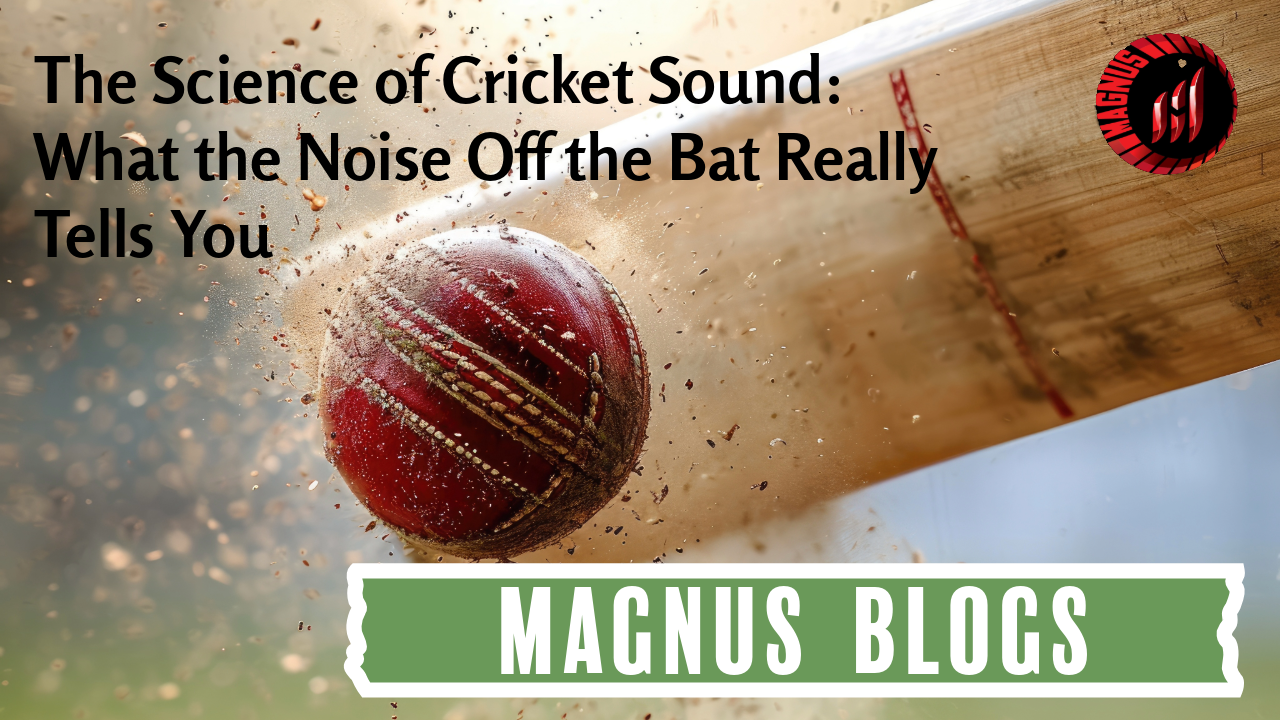For anyone who’s played or watched cricket closely, there’s something unmistakable about the sound of a perfectly timed shot. It’s clean, crisp, and satisfying — a sound that tells you, even before the ball reaches the boundary, that it was struck well. But have you ever wondered why cricket shots sound different? Or what that sound actually reveals about the bat, the timing, and the shot?
In this blog, we explore the fascinating science behind the sound of cricket, and how the noise off the bat can provide real-time feedback about performance and precision.
Why Sound Matters in Cricket
Sound is more than just background noise in cricket. It acts as an instant performance indicator. Players, coaches, and even commentators often judge the quality of a shot not just by sight, but by the sound it makes.
A clean, sharp “crack” usually signals excellent timing and contact from the bat’s sweet spot. A dull or hollow “thud” can suggest a mistimed stroke, a toe hit, or a thick edge. This instant feedback helps players fine-tune their technique — even during practice sessions — without needing to look up.
The Sweet Spot and Acoustic Feedback
The sweet spot of a bat — generally located in the middle of the blade — is engineered to produce the most energy transfer with the least vibration. When the ball hits this zone, the bat vibrates in a way that amplifies a sharp, resonant sound.
This sound is not just aesthetic; it’s physics in action. The bat’s structure, the impact force, and the lack of jarring vibration all contribute to a crisp acoustic signature. It's this consistency in tone that helps experienced players identify whether they’ve connected correctly — purely by sound.
What the Sound Can Reveal
1. Timing and Precision
The sound of a well-timed drive is unmistakable. When bat speed, angle, and ball position align, the sound is sharper and louder. Poorly timed shots, even with good power, tend to sound flatter and less energetic.
2. Point of Impact
Hitting off the toe or near the edge of the bat changes the way vibrations travel through the willow. These hits produce a lower-pitched or more muffled sound. With enough experience, a player can often tell exactly where the ball struck just by listening.
3. Bat Condition
As bats age or dry out, the sound they produce may change. A fresh bat with healthy willow tends to sound more vibrant. Cracks, drying, or internal damage can lead to duller, inconsistent tones. Paying attention to these sounds can actually help detect early signs of wear.
How Coaches Use Sound in Practice
In net sessions, especially when visual feedback is limited (like indoors or under lights), coaches often rely on sound to evaluate a shot. A quick, clean crack followed by a short echo is usually a good sign. Some elite coaches even close their eyes during drills to focus solely on auditory feedback — listening for consistency, rhythm, and connection.
Environmental Effects on Sound
Interestingly, the environment can also influence how a shot sounds. Outdoor sessions may disperse sound differently compared to enclosed indoor nets. Humidity and temperature can affect the leather ball and bat surface slightly, changing how vibrations are transferred.
That’s why players often notice that their shots “sound better” in some conditions than others — even if they’re hitting the same way.
Could Sound Play a Role in Future Cricket Tech?
As bat technology evolves, it's not hard to imagine innovations that incorporate sound-based sensors to analyze contact quality. Just like smartwatches can detect heartbeat rhythms, bats may one day analyze sound waves to give players instant data on sweet spot usage, mistimed strokes, or fatigue in willow.
Some prototypes already include sensors that monitor vibration, but pairing that with sound analysis could create a whole new layer of feedback — especially useful for self-coached players or at-home training.
Cricket bat types, Cricket equipment in usa, Cricket equipment store, Cricket gloves, Cricket helmet, Cricket kit bags, Cricket retailers, Durable cricket gloves, English willow bats, Icc approved helmets., Kashmir willow cricket bat, Latest kashmir willow bat
